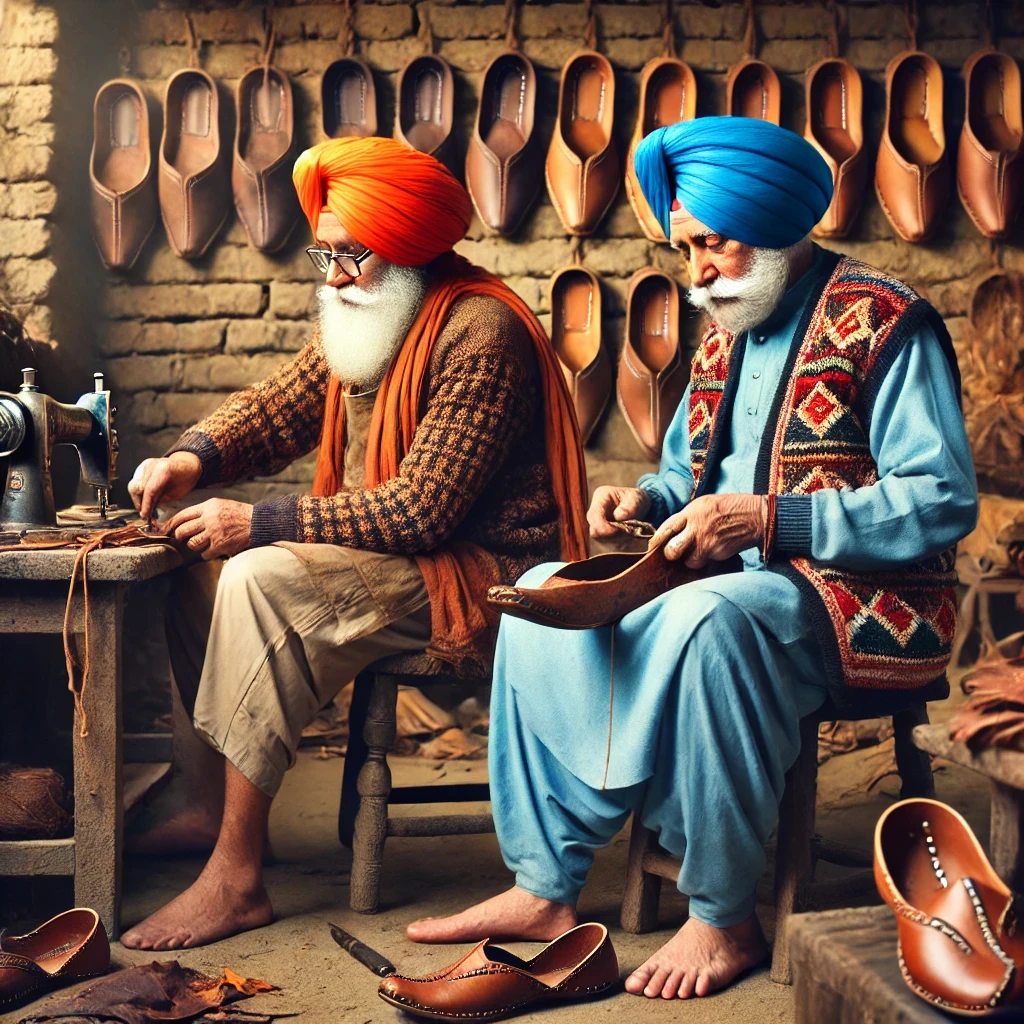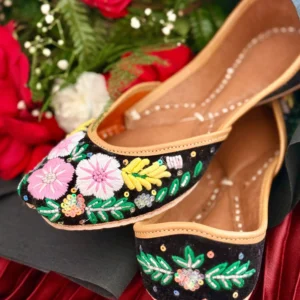
Embracing the Timeless Craft of Punjabi Jutti Making
Introduction: A true testament to luxury and fine craftsmanship, the Pashmina shawl is an iconic symbol of heritage and tradition in Indian culture. Derived from the Persian word ‘Pashm’ meaning wool, Pashmina refers to the fine cashmere wool obtained from the undercoat of the Capra Hircus goat found in the high altitudes of the Himalayan region. Known for its delicate texture and warmth, Pashmina has been a cherished fabric for centuries, often worn by royalty and nobility. Its intricate hand-spinning, weaving, and embroidery techniques make each Pashmina shawl a timeless piece of art.
Usage: Pashmina shawls are versatile garments suitable for both men and women. Traditionally, they were draped over ethnic Indian attire such as sarees, salwar kameez, and lehengas, especially during weddings and formal events. Over time, Pashmina shawls have transcended cultural boundaries and are now styled with western outfits like dresses, blazers, and evening gowns, adding elegance to any attire.
There are various types of Pashmina shawls categorized by their designs and embroidery styles:
- Plain Pashmina: Known for its simple elegance, these shawls are dyed in solid colors and ideal for formal wear.
- Kani Pashmina: Woven with wooden spools called ‘Kani’, these shawls feature elaborate patterns inspired by Kashmiri motifs.
- Jamawar Pashmina: Richly adorned with intricate paisley designs, these shawls are often considered a luxurious heirloom piece.
- Sozni Embroidered Pashmina: Characterized by delicate needlework, these shawls often depict floral patterns and are perfect for festive occasions.
Significance: The Pashmina shawl is more than just a fashion accessory; it is deeply embedded in Kashmiri culture and heritage. The craft of Pashmina weaving is an age-old tradition, passed down through generations of skilled artisans. The wool is meticulously hand-spun, and the weaving process requires exceptional skill and precision, taking weeks or even months to complete a single shawl.
Pashmina shawls are often gifted as tokens of love and respect, making them popular choices for wedding trousseaus and ceremonial attire. Owing to their intricate craftsmanship and luxurious appeal, Pashmina shawls have become highly sought-after worldwide.
History: The origins of Pashmina date back to ancient times. It is believed that the art of Pashmina weaving was introduced to Kashmir by Zain-ul-Abidin, the 15th-century ruler of the region. During the Mughal era, Pashmina shawls gained immense popularity, with emperors and nobility adorning themselves with these luxurious garments. The craft flourished under the patronage of Mughal rulers, with skilled artisans perfecting their techniques to create intricate designs.
Pashmina shawls became an integral part of trade during the 18th and 19th centuries, with European markets eagerly importing these luxurious pieces. Over time, Pashmina shawls evolved to include vibrant colors, intricate embroidery, and contemporary patterns, blending tradition with modernity.
Design: Pashmina shawls are handwoven using traditional wooden looms. The wool is first collected from the Capra Hircus goat, carefully combed to extract the soft undercoat. This fine wool is then hand-spun by skilled artisans, a delicate process that requires precision and patience. The spun yarn is then woven into luxurious shawls, often featuring detailed embroidery using silk or cotton threads.
Popular designs include:
- Paisley Motifs: A signature pattern in Kashmiri craftsmanship, symbolizing fertility and eternity.
- Floral Designs: Inspired by Kashmir’s lush gardens, these patterns add a touch of nature to the shawl.
- Geometric Patterns: Symmetrical shapes and lines that provide a contemporary touch to traditional Pashminas.
Challenges: Despite its cultural significance, the Pashmina industry faces several challenges. The process of hand-spinning and weaving is labor-intensive, requiring significant time and effort. Artisans struggle to meet the rising demand for faster production while preserving traditional techniques.
Additionally, the market is flooded with counterfeit Pashmina products made from synthetic fibers, which diminishes the authenticity of genuine Pashmina. The high cost of production and competition from machine-made shawls has also affected the livelihood of skilled craftsmen.
Efforts are underway to promote authentic Pashmina products, with the government implementing Geographical Indication (GI) tagging to ensure the authenticity of Pashmina shawls. Awareness campaigns and online platforms have also played a crucial role in connecting artisans to global markets, helping preserve this rich cultural heritage.
The timeless elegance of Pashmina shawls continues to captivate people worldwide, serving as a testament to India’s rich legacy of craftsmanship and tradition.
-
Sale!

Black Dabka Work Jutti
Original price was: ₹1,499.00.₹899.00Current price is: ₹899.00. Select options This product has multiple variants. The options may be chosen on the product page -
Sale!

Black Multi Floral Jutti
Original price was: ₹1,499.00.₹899.00Current price is: ₹899.00. Select options This product has multiple variants. The options may be chosen on the product page -
Sale!

Black Punjabi Juttis & Mojaris
Original price was: ₹930.00.₹399.00Current price is: ₹399.00. Select options This product has multiple variants. The options may be chosen on the product page -

Black Rhinestone Pumps for Women and Girls
₹649.00 Select options This product has multiple variants. The options may be chosen on the product page
